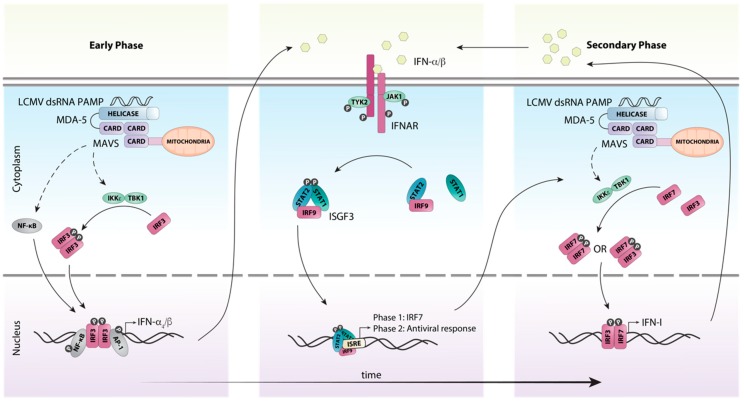Figure 3.
Schematic representation of host detection of LCMV and subsequent type I interferon induction. The production of IFN-Is in response to LCMV infection can be categorized into early and secondary phases. Upon recognition of viral dsRNA by the pattern recognition receptor MDA-5, the adaptor protein MAVS is recruited, initiating a signaling cascade involving multiple factors. This cascade results in the phosphorylation and subsequent activation of the transcription factor IRF3 by the kinases IKKε and TBK1. Simultaneously, the transcription factors NF-κB and AP1 are also activated and translocated to the nucleus. Together these transcription factors initiate the transcription of the initial IFN-I species IFN-β and IFN-α4. These early IFN-Is subsequently bind to the IFN-I receptor IFNAR in an autocrine or paracrine fashion and activate canonical IFN-I signaling through the ISGF3 complex. This results in the transcription of interferon-stimulated genes, including the transcription factor IRF7. IRF7 is then activated in a similar fashion to IRF3, resulting in the amplification of the secondary IFN-I response. Solid arrows indicate direct steps, dashed arrows indicate multiple steps/additional proteins involved.

